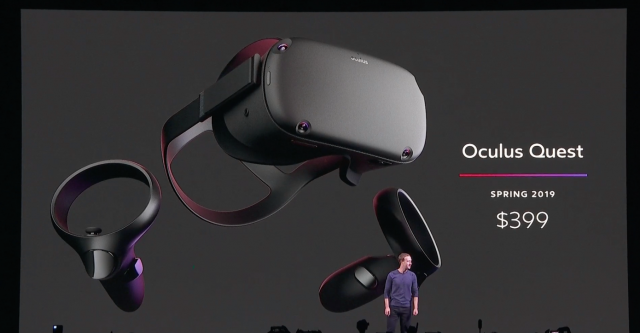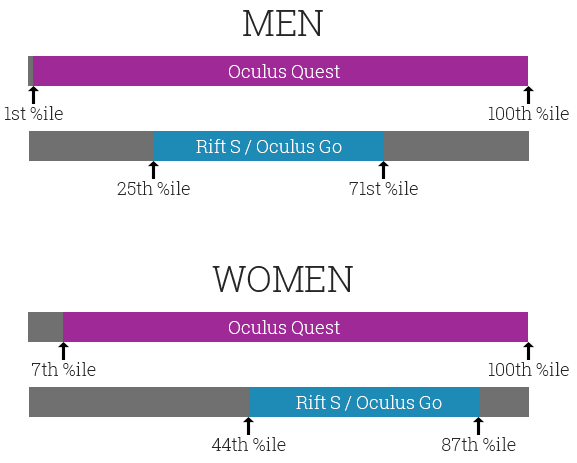VR Headset
My ideal VR headset would have to be the Oculus Quest. It has a good balance of features that make it appealing to the VR newbie.

Like its predecessor the Oculus Go, it consists of a built in ARM SOC that allows it to play VR games optimised for smartphones. While these lack the graphics detail of AAA-grade PC games, they nonetheless provide plenty of immersion and fun. It also means that setup is extremely simple, allowing those with dirge-like technical knowledge to jump in and start playing. Its standalone nature makes it perfect for toting along to parties and being known as ‘the fun one’.
The standout feature (IMO) is the interpupillary distance (IPD) adjustment, which makes it more ergonomic compared to the Oculus Go and Rift S. The horizontal distance between the VR lenses can be adjusted, such that the light rays get focused correctly into your eyeballs. I tried an Oculus Rift in 2014 and got VR sickness pretty fast, so anything that makes the experience less disorientating is always welcome.


As can be seen in the bar chart, the Quest has a far greater IPD range than the Rift S and the Go. It’s great to see that Oculus is finally thinking of the women and children, and also those with tiny mongoloid faces (myself included).
The only downside I can think of is that it seems pretty front-heavy, which is never a good thing for extended periods of use. I’d have to actually try it on to see how it feels, though.
[1] https://uploadvr.com/data-suggests-oculus-rift-s-ipd-range-best-for-around-half-of-adults/
MR Headset
The Microsoft Hololens 2, released just last year, is a significant advance on the previous version. It has twice the field of view, it’s lighter, and the weight is balanced more towards the back. It now features a flip up visor, which makes toggling between MR and RR (real reality) a seamless experience. This should let it fit nicely into various industry-oriented workflows. Like the original Hololens, it works when worn over spectacles.
The Hololens 2 is able to understand its environment and user to a much greater degree. Some game changing features that have been added include Eye-tracking, Iris recognition, and custom-built AI inference capabilities. This opens up a world of possibilities for application developers – from biometric authentication to adaptive ergonomics.
However, the biggest indication that the Hololens ecosystem is starting to take off is the amount of buy-in in industries where MR makes the most sense. For example, GIGXR and Medivis are launching MR software platforms that focus on medical training and surgical theatre imaging. [2,3] These were developed in collaboration with Microsoft, and make use of its Hololens hardware.

“Get it yourself”
Having come from a surgical robotics background, such developments in the operating theatre are exciting to me and are part of the reason I took CS4240.
[2] https://techcrunch.com/2019/12/18/snagging-pearsons-ar-assets-and-1-million-in-cash-gigxr-is-ready-for-its-close-up/
[3] https://techcrunch.com/2019/05/30/medivis-gets-fda-approval-for-its-augmented-reality-surgical-planning-toolkit/
